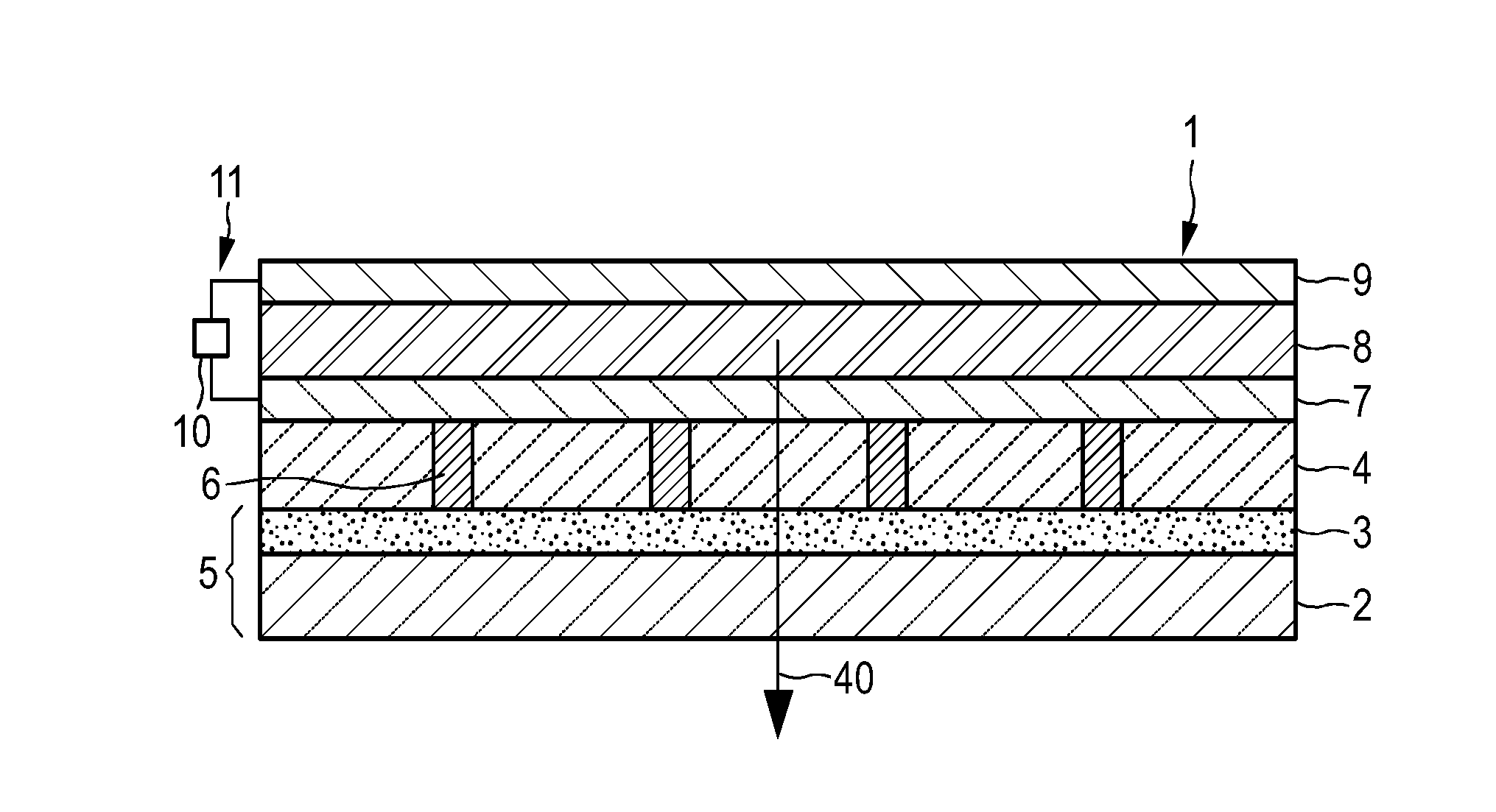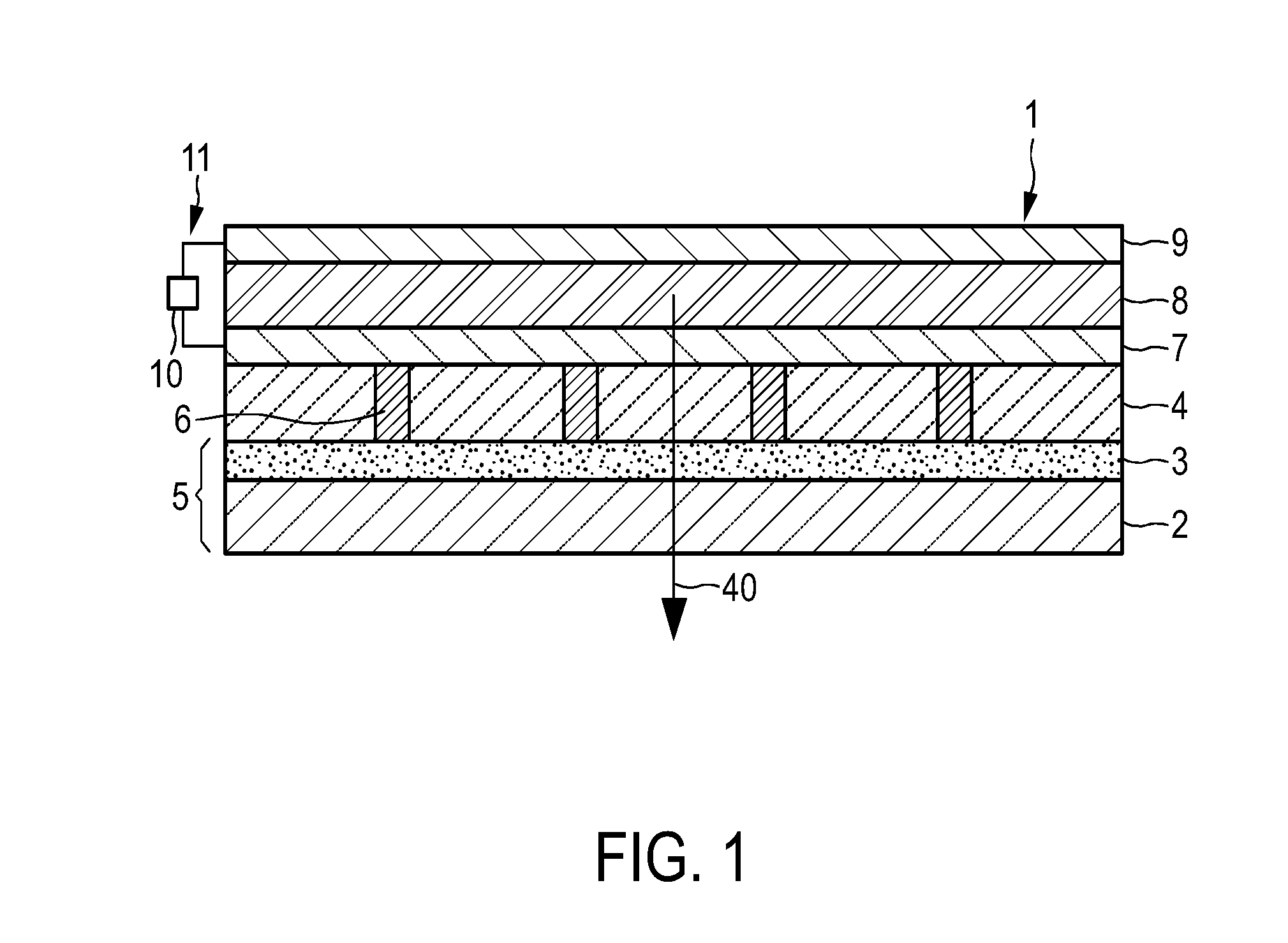Light emitting device
a technology of light emitting device and light source, which is applied in the direction of organic semiconductor device, semiconductor device, electrical apparatus, etc., to achieve the effect of improving light emission quality
- Summary
- Abstract
- Description
- Claims
- Application Information
AI Technical Summary
Benefits of technology
Problems solved by technology
Method used
Image
Examples
Embodiment Construction
[0021]FIG. 1 shows schematically and exemplarily an embodiment of a light emitting device. The light emitting device 1 is an OLED comprising an organic light emitting layer 8 between a first electrode layer being a transparent anode layer 7 and a second electrode layer being a reflective cathode layer 9. A voltage source 10 is connected to the anode layer 7 and the cathode layer 9 via electrical connections 11 like wires, wherein the organic light emitting layer 8 is adapted to emit light 40, if the voltage is applied to the anode layer 7 and the cathode layer 9.
[0022]The organic light emitting layer 8 comprises a stack of sublayers including one or several organic light emitting sublayers and optionally further sublayers like one or several hole injection sublayers, one or several hole transport sublayers, one or several electron transport sublayers, one or several charge generation sublayers, et cetera. The OLED 1 further comprises a substrate 5, which might be a glass substrate o...
PUM
 Login to View More
Login to View More Abstract
Description
Claims
Application Information
 Login to View More
Login to View More - R&D
- Intellectual Property
- Life Sciences
- Materials
- Tech Scout
- Unparalleled Data Quality
- Higher Quality Content
- 60% Fewer Hallucinations
Browse by: Latest US Patents, China's latest patents, Technical Efficacy Thesaurus, Application Domain, Technology Topic, Popular Technical Reports.
© 2025 PatSnap. All rights reserved.Legal|Privacy policy|Modern Slavery Act Transparency Statement|Sitemap|About US| Contact US: help@patsnap.com



